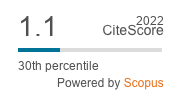Migrations in Chile's Norte Grande
Resultados de un análisis de movimientos migratorios entre los años 1965 y 1970
Keywords:
Migration, Northern Chile, Demographics, PopulationAbstract
Based on our own observations in the field, surveys and the interpretation of official Chilean statistics, this study attempted to analyze migration movements in the Norte Grande during the years 1965-1970. The database made it possible to record migrants exclusively at the place of destination. The main population concentrations in the desert zone of northern Chile were included in the research: the coastal cities of Arica, Iquique, Tocopilla, Antofagasta and the capital of the province of Atacama, and the city of Copiapó. Also included were the centers of Gran Minería del Cobre, Chuquicamata-Calama and El Salvador, the María Elena and Victoria saltpeter offices, as well as the city of Ovalle, belonging to the Norte Chico region. The latter was included to better highlight the stages in the evolution of migration.
Using the original census forms from the 1970 census, a total of 32,000 cases of migration were recorded, covering the immigration of individuals or families between 1965 and 1970, registered according to region of origin. In addition to an analysis of the direction and intensity of the migratory flows of the mobile population, certain data concerning the individual and the characteristics of the housing in the place of destination were considered. This was done with a random sample of 10%.
The discussion of various migration theories and models made it possible to establish that it cannot be the sole purpose of a migration analysis to express the observed migration flows through exact mathematical formulas, either by testing, improving or extending known gravity and regression models. For this reason, the emphasis of the research is based on a differentiated analysis from the regional and thematic point of view of migrations in the Chilean Norte Grande. In this way, in addition to the quantitative aspect, the qualitative connotation of the migratory processes is emphasized. Using demographic and socioeconomic characteristics, an attempt was made to typify migration flows with the help of statistical quantifications (factor analysis and distance grouping). From this, background information on the migration behavior and motivation of specific social groups was derived directly.
References
BAHR, J.: Migration im Grossen Norden Chiles. Bonner geographische Abhandulgen 50, 1975.
BOGUE, D.J u M. J. HAGOOD: Subregional Migration in the United States 1935-1940. Vol. 2: Differential Migration in the Corn and Cotton Belts. Scripss Foundation Studies in Population Distribution N°6, Oxford, Ohio, 1953.
CARROTHERS, G.A.P.: An Historical Review of tue Gravity and Potential Concepts of Human Interaction. Journal of the Amer. Inst. of Planners, 1956, 94-102
ELIZAGA, J.C.: Migraciones a las áreas metropolitanas de América Latina. CELADE, Santiago 1970.
HERRICK, B.H.: Urban Migration and Economics Development in Chile. M.I.T. Monographs in Economics, 6, Cambridge, Mass. 1965.
ROSSI, P.H.: Why Families Move: A Study in the Social Psychology of Urban Residential Mobility, Glencoe, 111. 1955.
SZELL, G. (Hrsg.): Regionale Mobilität, Munchen 1972.
ZEMELMAN, H.: El migrante rural, ICIRA, Santiago 1971






